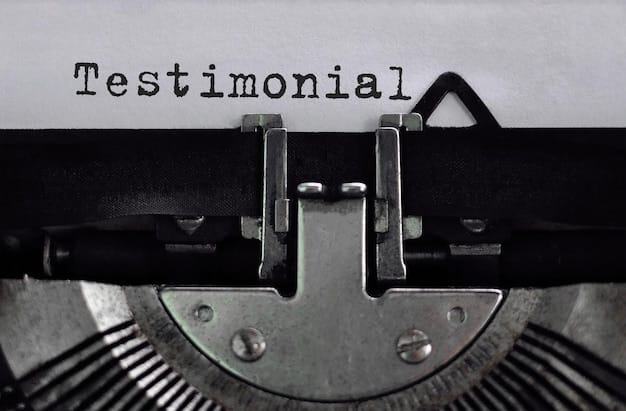Mastering the Art of Book Review Headlines: Attract Readers & Editors

Mastering the art of the book review headline is crucial for captivating readers and editors alike. A well-crafted headline can significantly increase readership and improve the chances of your review being noticed and shared.
Want your book reviews to stand out? Mastering the art of the book review headline: tips for attracting readers and editors is essential for grabbing attention in today’s crowded online space. A compelling headline can make the difference between a review that’s read and one that’s overlooked.
Why Compelling Headlines Matter in Book Reviews
In today’s fast-paced digital world, a book review’s headline is often the first (and sometimes only) thing a potential reader sees. It’s a crucial element that determines whether someone will click to read the full review. Let’s discuss what makes a headline worth clicking.
First Impressions Count
A headline is your first chance to make a positive impression. It needs to be clear, concise, and intriguing enough to pique the reader’s interest. A dull or confusing headline will likely be ignored.
Search Engine Optimization (SEO) Considerations
Effective headlines also play a vital role in SEO. Using relevant keywords helps search engines understand what your review is about, potentially leading to higher rankings in search results. This visibility can drive more organic traffic to your review.
- Attract Readers: A good headline should entice readers who are interested in the book or genre.
- Inform Editors: Editors often scan headlines to quickly assess the relevance and quality of a review.
- Improve SEO: Well-crafted headlines with pertinent keywords boost search engine rankings.
Crafting headlines that are both reader-friendly and SEO-optimized is an art worth mastering. It requires a thoughtful approach to language and a clear understanding of your target audience. Mastering the art of the book review headline: tips for attracting readers and editors is about balancing creativity with strategic keyword usage.

Understanding Your Audience
Before crafting a headline, it’s crucial to understand who you’re trying to reach. Are you writing for casual readers, literary enthusiasts, or industry professionals? Knowing your audience will help you tailor your language and tone appropriately.
Identifying Reader Interests
Consider what aspects of the book are most likely to appeal to your target audience. Is it the plot, the characters, the author’s style, or the underlying themes? Use this knowledge to create headlines that resonate with their interests.
Tailoring Headlines for Different Platforms
Headlines might need to be adjusted depending on where they will be published. A headline for a social media post might be shorter and catchier than one for a long-form article. Adapt your approach to suit the platform.
Understanding your audience is fundamental to mastering the art of the book review headline: tips for attracting readers and editors. Effective headlines speak directly to the reader’s interests and motivations, encouraging them to engage with your review. Consider what they seek and what will immediately capture their attention.
Essential Elements of a Great Book Review Headline
Several elements contribute to a compelling book review headline. It’s important to balance clarity, intrigue, and relevance to create a headline that truly stands out. Let’s explore the key components.
Clarity and Accuracy
A good headline should clearly convey what the review is about. Avoid ambiguity or misleading language. Accuracy is essential for maintaining credibility and preventing disappointment. No clickbait!
Intrigue and Curiosity
While clarity is important, a headline also needs to pique the reader’s curiosity. Use intriguing language, ask a question, or hint at a surprising aspect of the book. Just be sure any curiosity is well-placed.
Relevance and Keywords
Include relevant keywords that accurately reflect the book’s genre, themes, or author. This helps readers find your review through search engines and ensures that your headline resonates with the right audience.
- Specific Language: Use precise words that convey the essence of the book.
- Emotional Connection: Evoke emotions to draw readers in.
- Benefit Promises: Suggest what readers will gain from reading the review.
Combining these elements is key to mastering the art of the book review headline: tips for attracting readers and editors. A successful headline balances clarity, intrigue, and relevance to capture the reader’s attention and make them want to know more. Think about how each element can work together to create a compelling message.

Headline Writing Techniques and Examples
Now, let’s delve into some specific headline writing techniques and look at examples that illustrate these principles. Understanding these techniques will help you create more effective and engaging headlines, and elevate the quality of your reviews.
The Question Headline
Asking a question in your headline can be a great way to engage readers. Make sure the question is relevant to the book and sparks curiosity. For example, “Is [Book Title] the Best Novel of the Year?”.
The Benefit Headline
Highlight the benefits readers will gain from reading the book or your review. For instance, “Discover Why [Book Title] Will Change How You See the World.” This approach attracts readers by suggesting value, immediately capturing their attention.
The Intrigue Headline
Create intrigue by hinting at a surprising or controversial aspect of the book. An example is “The Shocking Twist in [Book Title] That Everyone Is Talking About.” This encourages readers to click and learn more.
- “The Definitive Guide to [Book Title]”: Implies authority and thoroughness.
- “[Book Title]: A Must-Read for [Target Audience]”: Targets a specific audience.
- “Unveiling the Secrets of [Book Title]”: Promises insight and discovery.
These techniques are essential in mastering the art of the book review headline: tips for attracting readers and editors. The best headlines use a combination of these strategies to maximize impact. Practice experimenting with different approaches to see what works best for your audience and the type of book you’re reviewing.
Avoiding Common Headline Mistakes
Even with the best intentions, it’s easy to make mistakes when crafting book review headlines. Let’s discuss common pitfalls to avoid, ensuring your headlines are effective and reader-friendly and that readers keep coming back for more of your reviews!
Being Too Vague
Avoid vague or generic headlines that don’t provide any specific information about the book. For example, a headline like “Great Book!” is unlikely to attract many readers. Be specific or don’t expect a lot of traffic.
Using Clickbait Tactics
While intrigue is important, avoid using misleading or sensational headlines that don’t accurately reflect the content of your review. Clickbait can damage your credibility and frustrate readers. Instead, use a little bit of intrigue. But don’t promise what you can’t deliver.
Mastering the art of the book review headline: tips for attracting readers and editors involves avoiding these common errors. By focusing on clarity, accuracy, and genuine curiosity, you can create headlines that attract the right readers and build a loyal audience. Think from a reader’s perspective, what would you want to see and know?
Testing and Refining Your Headlines
The process of mastering the art of the book review headline: tips for attracting readers and editors doesn’t end with writing. It’s important to test and refine your headlines to see what works best. Let’s explore how you can do that.
A/B Testing
Experiment with different versions of your headlines to see which ones perform better. Use A/B testing tools to track click-through rates and engagement metrics. This can provide valuable insights into what resonates with your audience.
Analyzing Performance Data
Pay attention to metrics such as click-through rates, time spent on page, and social media shares. This data can help you understand what makes a headline successful and inform your future headline writing strategies. You can then make adjustments for your future posts.
Refining your headlines based on performance data is a key component of mastering the art of the book review headline: tips for attracting readers and editors. Use the insights you gain to continuously improve your headline writing skills and attract more readers to your reviews. By being strategic and open to improvements, you will go far!
| Key Point | Brief Description |
|---|---|
| 🎯 Headline Clarity | Ensure headlines clearly reflect the review’s content. |
| 🤔 Intrigue | Incorporate elements that pique reader curiosity. |
| 🔑 Keywords | Include relevant keywords for better search visibility. |
| 🧪 Testing | Test and refine headlines based on performance data. |
Frequently Asked Questions
A compelling headline is crucial for grabbing readers’ attention and increasing the visibility of your review. It encourages clicks and engagement with your content.
Key elements include clarity, intrigue, relevance, and the inclusion of appropriate keywords. A successful headline balances these factors to maximize impact.
Avoid being vague, using clickbait tactics, or creating misleading headlines. Focus on providing accurate and engaging information that sets realistic reader expectations.
SEO is crucial for increasing the visibility of your review in search engine results. Including relevant keywords in your headline helps attract organic traffic.
Use A/B testing to compare different headline versions and analyze metrics like click-through rates. Data-driven adjustments help refine your headlines over time.
Conclusion
Mastering the art of the book review headline: tips for attracting readers and editors requires a blend of creativity, strategy, and attention to detail. By understanding your audience, avoiding common mistakes, and continuously refining your approach, you can create headlines that captivate readers and elevate your reviews.





